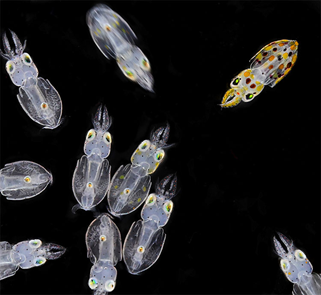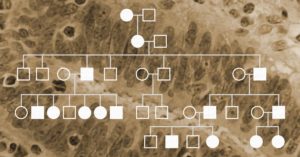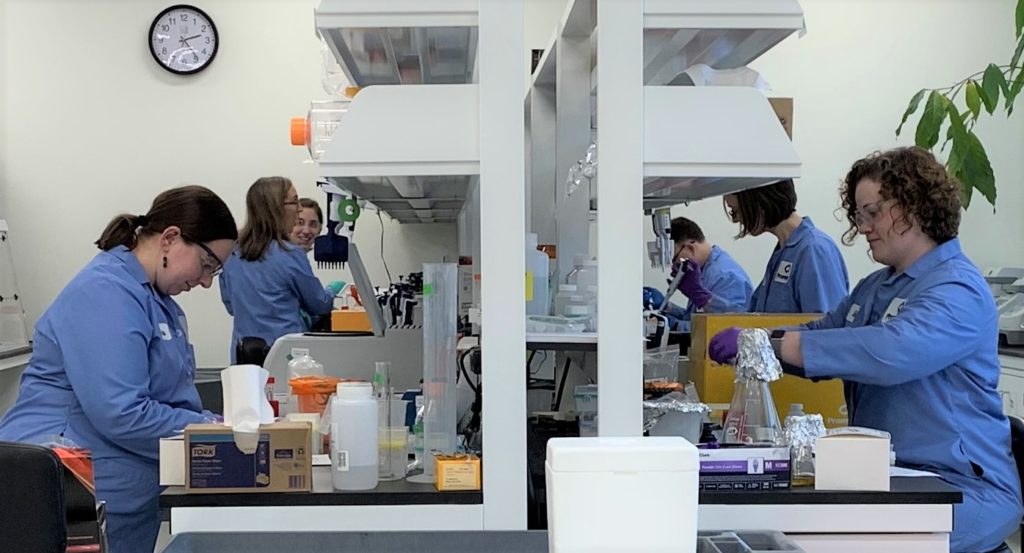This winter, norovirus outbreaks surged across the U.S., with cases nearly doubling from last year, according to the CDC. Schools, cruise ships, nursing homes and healthcare facilities saw widespread illness, underscoring the urgent need for a norovirus vaccine.
Each year, norovirus causes 685 million infections worldwide and is the leading cause of foodborne illness in the U.S., responsible for 21 million cases annually. Despite its massive impact, there is still no approved vaccine—but recent advancements suggest that this could change.
Science Writing
To Tweet or Not to Tweet: Microblogging for Science Communication
Microblogging is a form of blogging characterized by a shortened format and frequent posting schedule. Instead of personal websites, microblogs reside on social media platforms or apps, making them accessible to interact with and post on smartphones. Microblogs focus on interacting with audiences directly. With the ability to reply to or repost content, microblogging is more conversational and collaborative with audiences than long- form writing.

After its founding in 2006, Twitter (recently renamed “X” by its new owner) quickly became the face of microblogging platforms. Users publish content to the platform in posts of 280 characters that can include images, gifs, videos, and what the platform is most known for: hashtags. Hashtags enable users to search the platform by topic to connect with or follow other users who are writing about those topics. Users can also interact with each other by liking or retweeting tweets, which posts them to their own account. The open forum discussion style makes it possible for individuals to share their stories, offering first-hand accounts of breaking news and fueling political movements such as the Women’s March and Black Lives Matter.
Continue reading “To Tweet or Not to Tweet: Microblogging for Science Communication”Squid Games: Camouflage or Communication, It’s All Skin Deep

Squids are mysterious creatures roaming seas and oceans. They are also the subjects Urs Albrecht chose for his winning picture in the Swiss Art + Science competition, “One Out.” The photo shows squid juveniles, one of which displays striking colors in opposition to the rest. The bright individual is also physically removed from the group, may be scared or angry. The image is fascinating because we can see complex biology at play with the naked eye. Squids are Coleoid cephalopods, mollusks with arms attached to their heads. They have lost their shell and developed larger and highly differentiated brains and camera-type eyes through evolution. Their nervous system is highly organized. The central brain acts as the decision-making unit, and the peripheral nervous system processes motor and sensory information.
Continue reading “Squid Games: Camouflage or Communication, It’s All Skin Deep”Using Databases to Find Scholarly Sources
Today’s guest blog was written in collaboration with Melissa Martin, a former global marketing intern with Promega. She is a senior at the University of Wisconsin-Madison where she is double majoring in zoology and life sciences communication, with a certificate in environmental studies.

Peer-reviewed papers are considered the most technical and in-depth way to learn about research and scientific advances. As a student or scientist, you will not only want to read scholarly articles to learn about what others are doing in your field but also to expand your knowledge and learn about scientific advances in completely new areas of study. With countless disciplines of science covering wide-ranging topics such as cell biology, physical chemistry or human behavior, it can be overwhelming to do a general search and find articles and journals that will have the topics relevant to your interests.

Science and Journalism – Opposites or Not So Much?
This blog was written in collaboration with our partners at Promega GmbH.
Scientists are comfortable speaking to people who know their field. Speaking to scientists outside of their field of expertise can become a little more challenging, and many find the greatest challenge of all is speaking to people who do not have a science background and are hearing about a scientific concept for the first time, such as journalists in the popular media. What can scientists and journalists do to make the most of the interface of science and journalism?

The importance of the interface between science and journalism is increasingly visible with scientific topics appearing on the national news more frequently due to COVID-19, climate change, and diseases like cancer. So, where can journalists go to learn best practices for interviewing scientists and writing about scientific topics? Promega GmbH offers a platform in which scientists and journalists come together and learn from each other in a constructive exchange. In this workshop setting, scientists speak about a certain topic, and journalists from all kinds of backgrounds can ask questions. When the journalist authors an article about what they learned in that workshop, both sides benefit. The scientists’ work becomes visible, and society learns more about scientific research and discovery that can help all of us to better understand the world and contribute to a brighter future.
Here we describe several common themes that have emerged from these science journalism workshops that may help you the next time you find yourself trying to explain your research to someone unfamiliar with your field.
Continue reading “Science and Journalism – Opposites or Not So Much?”Lessons in History, Hope and Living with Lynch Syndrome from the “Daughter of Family G”
Lynch Syndrome is the autosomal dominant hereditary predisposition to develop colorectal cancer and certain other cancers. This simple, one sentence definition seems woefully inadequate considering the human toll this condition has inflicted on the families that have it in their genetic pedigree.
They Called it a Curse
To one family, perhaps the family when it comes to this condition, Lynch Syndrome has meant heartache and hope; grief and joy; death and life. Their story is told by Ami McKay in her book Daughter of Family G, and it is at once both a memoir of a Lynch Syndrome previvor (someone with a Lynch Syndrome genomic mutation who has not yet developed cancer) and a poignant and honest account of the family that helped science put name to a curse.
“The doctors called it cancer. I say it’s a curse. I wish I knew what we did to deserve it.”
Anna Haab from Daughter of Family G (1)

The scientific community first met “Family G” as the meticulously created family tree, filled with the stunted branches that mark early deaths by cancer. The pedigree was first published in 1913 in Archives of Internal Medicine (2). In the article, Dr. Alderd Warthin wrote: “A marked susceptibility to carcinoma exists in the case of certain family generations and family groups.” In 1925, an expanded pedigree of circles and squares was published in Dr. Warthin’s follow up study in the Journal of Cancer Research (3). But each circle and square in that pedigree denotes a person. Each line represents their dreams together for the future, and Ms. McKay wants us to know their names: Johannes and Anna, Kathrina, Elmer, Tillie, Sarah Anne (Sally); and—most importantly—Pauline. Because without Pauline there would be no story.
Continue reading “Lessons in History, Hope and Living with Lynch Syndrome from the “Daughter of Family G””Celebrating the Work of Women Scientists on the 100th Anniversary of Rosalind Franklin’s Birth
Photo 51 is the now-famous X-ray diffraction picture that allowed Watson and Crick to crystalize centuries work of scientific study (from Mendel to Chargaff) into a viable structural model that explained how DNA could serve as the material of the gene. The photo was painstakingly produced by Dr. Rosalind Franklin, a contemporary of Watson and Crick. Although she and her colleague R.G. Gosling did publish their work in the same issue of Nature as the Watson and Crick paper (1,2), their work did not receive the same public accolades of that of Watson and Crick.

Women scientists have been contributing to our understanding of the world around us throughout history. On this 100th anniversary of Dr. Rosalind Franklin’s birth, we want to take a little time to recognize the work that women scientists are doing at Promega.
Continue reading “Celebrating the Work of Women Scientists on the 100th Anniversary of Rosalind Franklin’s Birth”How to Start Writing a Scientific Manuscript
Today’s blog is adapted from a presentation by Danette Daniels, PhD, in our webinar “Writing About Science: Tips and Tricks for Communicating Your Research.”
As scientists, we can do science forever. The beauty about science is that the questions never end – we can keep asking, and every time we find an answer, we have a new direction to pursue. But it’s very important to know when it’s time to write up your results.

Publishing may be connected to leaving or transitioning your position, but at all times you should be thinking, “What is my end goal? What is the big question I want to answer? What are the questions the field has about my research?” As you reach milestones and make discoveries, whether big or small, consider whether you will have a complete and compelling story to tell in the end.
Continue reading “How to Start Writing a Scientific Manuscript”Improving Science Literacy for the New Decade
Science touches our lives, daily. But far too many scientific concepts and terms are misunderstood and used incorrectly. Even those of us wearing a “scientist” badge sometimes misappropriate terms, which can act to reproduce the misuse.
A basic level of science literacy is so important for all of us. Why? So that when bombarded with comments about vaccination or climate change on a social media site, we are able to sift through the jargon, understand what’s correct and what is not correct, and make decision based in facts vs. internet gossip. With just a bit of knowledge of basic science terms, you are better protected against deception and you’ll know how to sort facts from fiction.
Here are a few general science terms that are commonly misunderstood and misused.
Continue reading “Improving Science Literacy for the New Decade”“The Human Placenta,” or “Why I Love Science Writing”

Have you read last week’s breaking story about the microbiome of the human placenta? Wait, stop, don’t run away to Google it! I’ll tell you all about it – this is a science blog, remember?
I’m asking because as I started reading about the topic in preparation for writing this blog post, I noticed two things. First, as a science writer who tries to stay well-connected with what’s going on in the world of biology research, it would have been nearly impossible for me to avoid this story. I get eight or nine daily digest emails from scientific publications every day, and I think over the course of last week, every single one came with a headline related to the placenta study. (Of course, I read them all. And the Nature study they were based on.)
Second, I noticed that each story I read had a slightly different angle on covering the research. As scientists, we like to believe that science is, well, just science. It’s factual. We pore over the data and reach a conclusion. If we aren’t sure of something, we search the journals. The story, if there is one, is about methods and controls, protocols and reagent quality. However, when information about that research is communicated broadly, outside of the journals, we can get a different impression based on how the author frames their article.
Continue reading ““The Human Placenta,” or “Why I Love Science Writing””